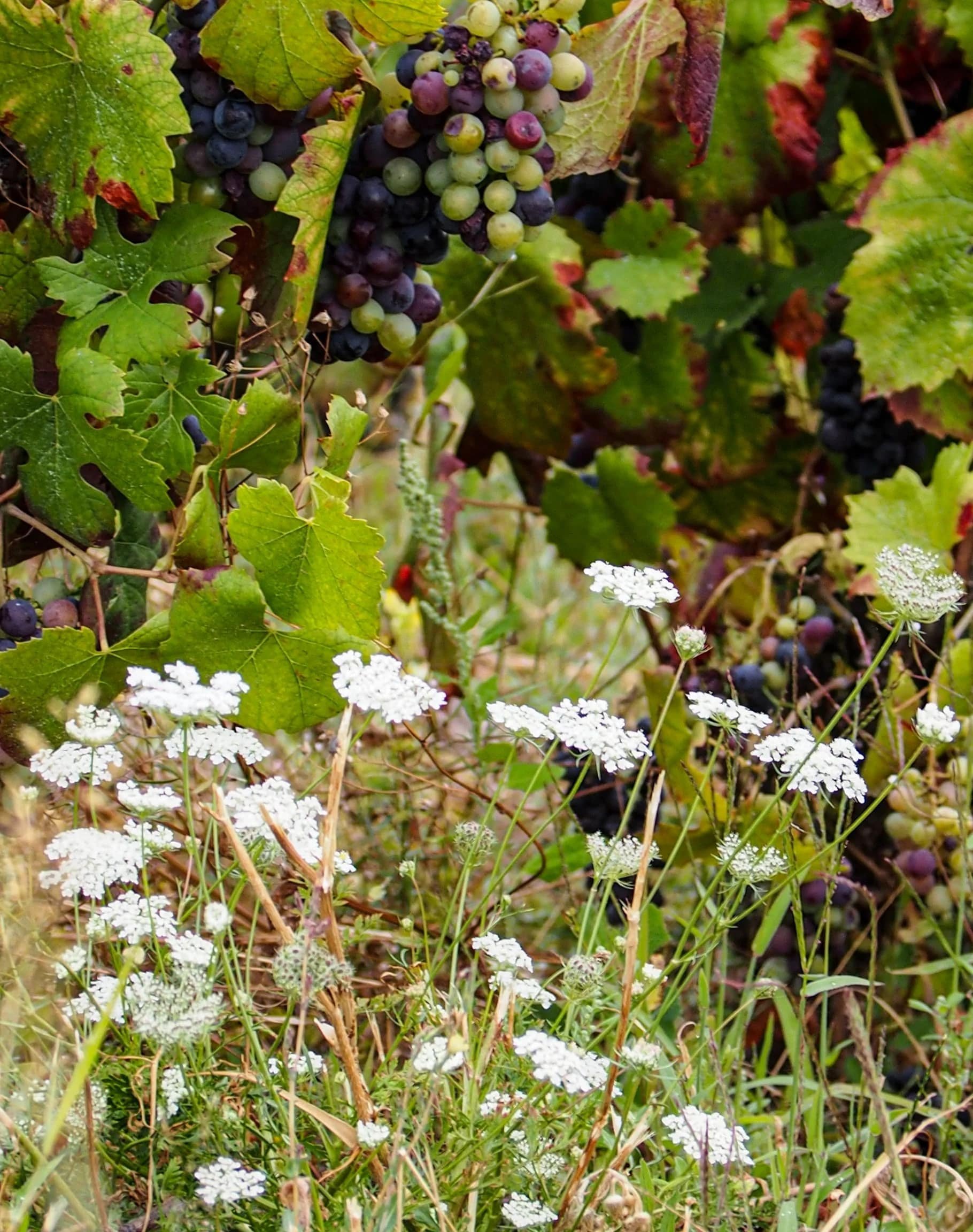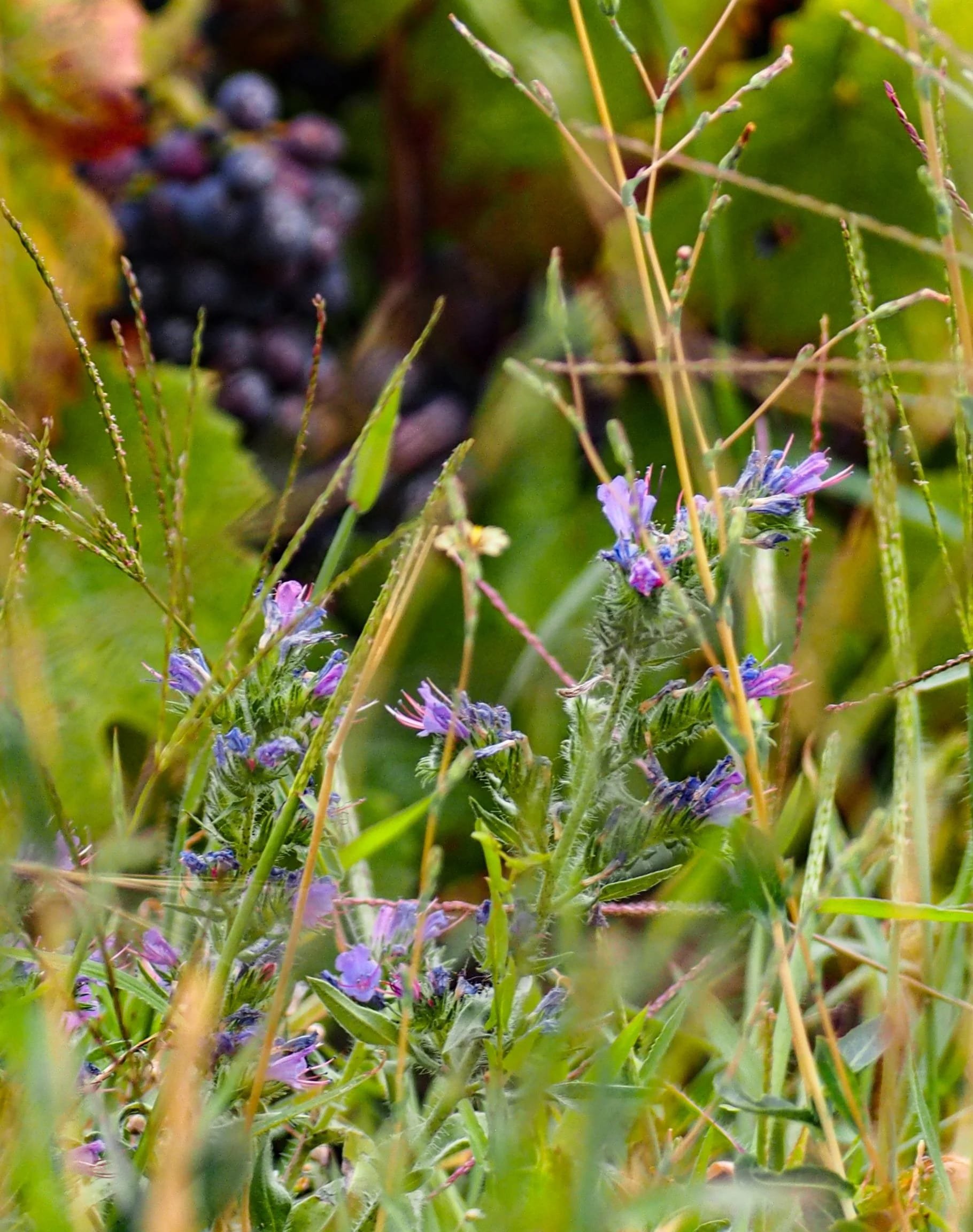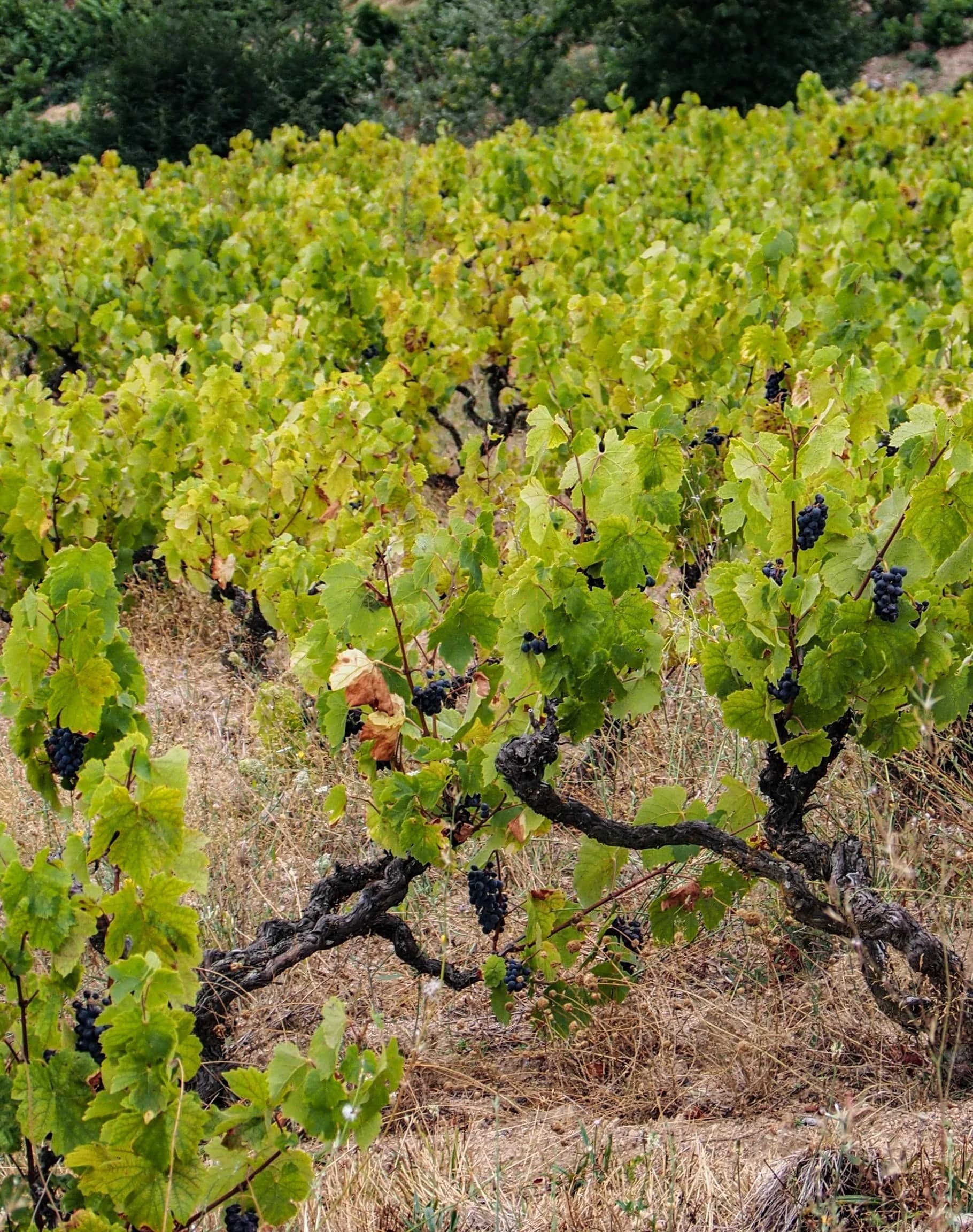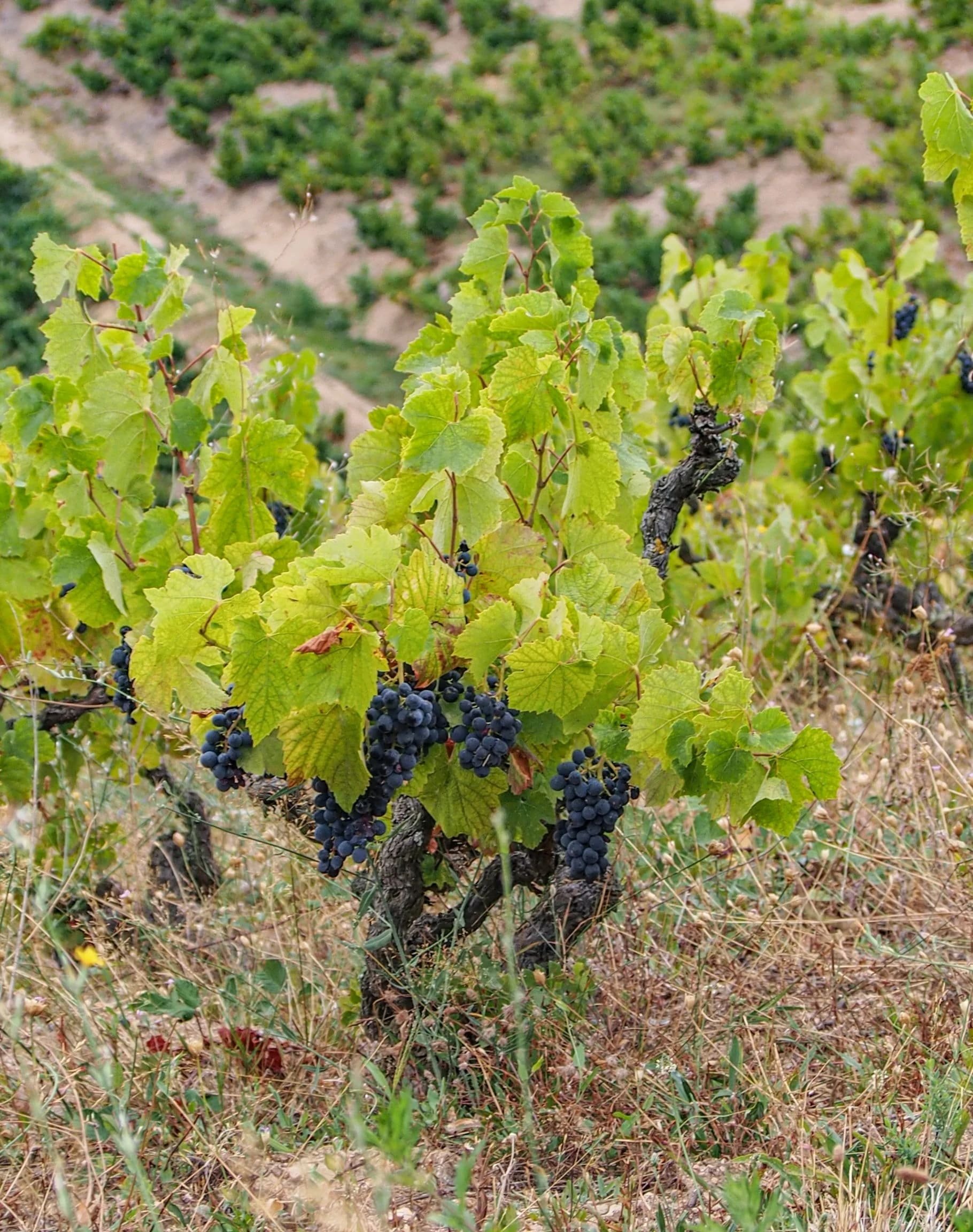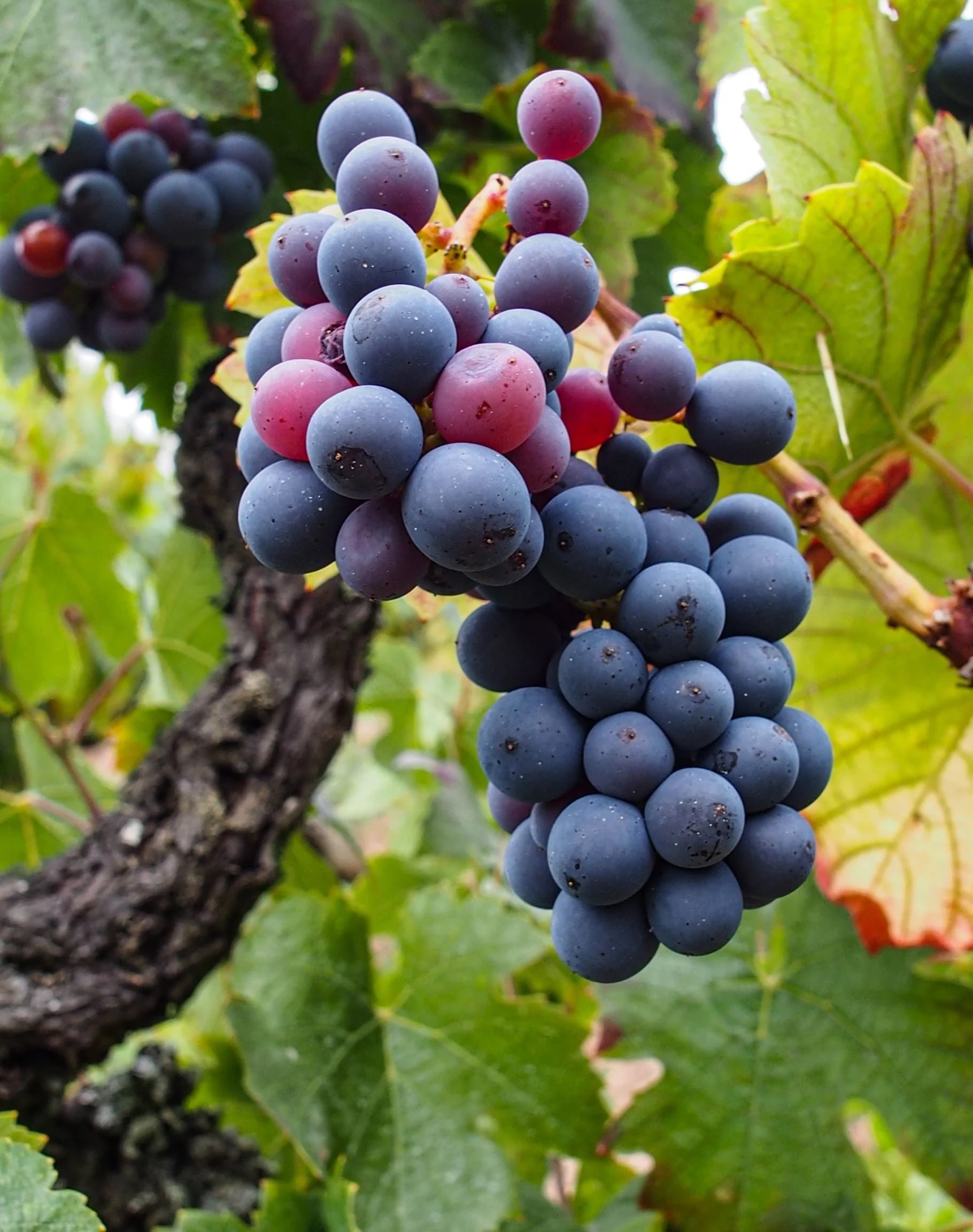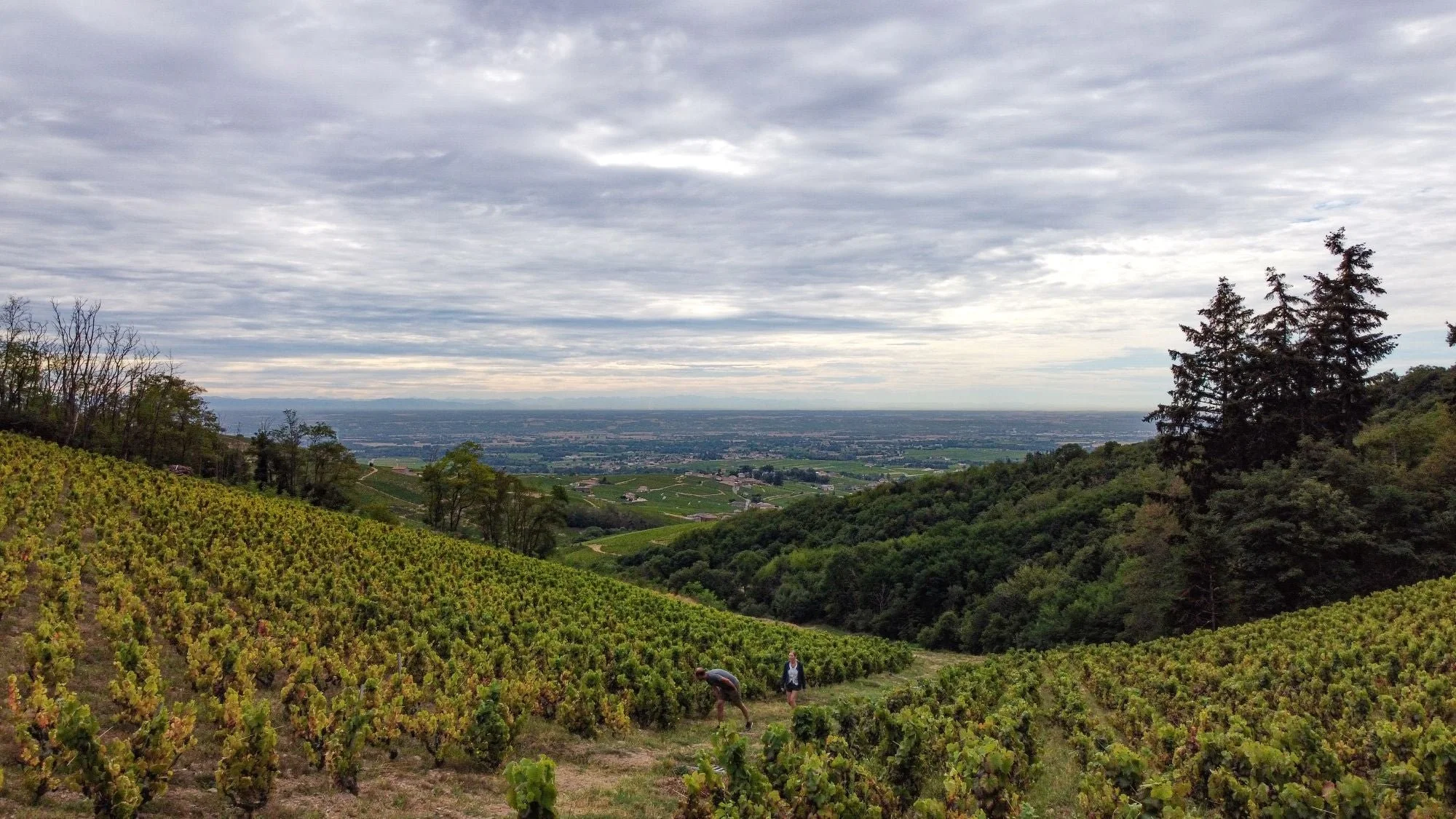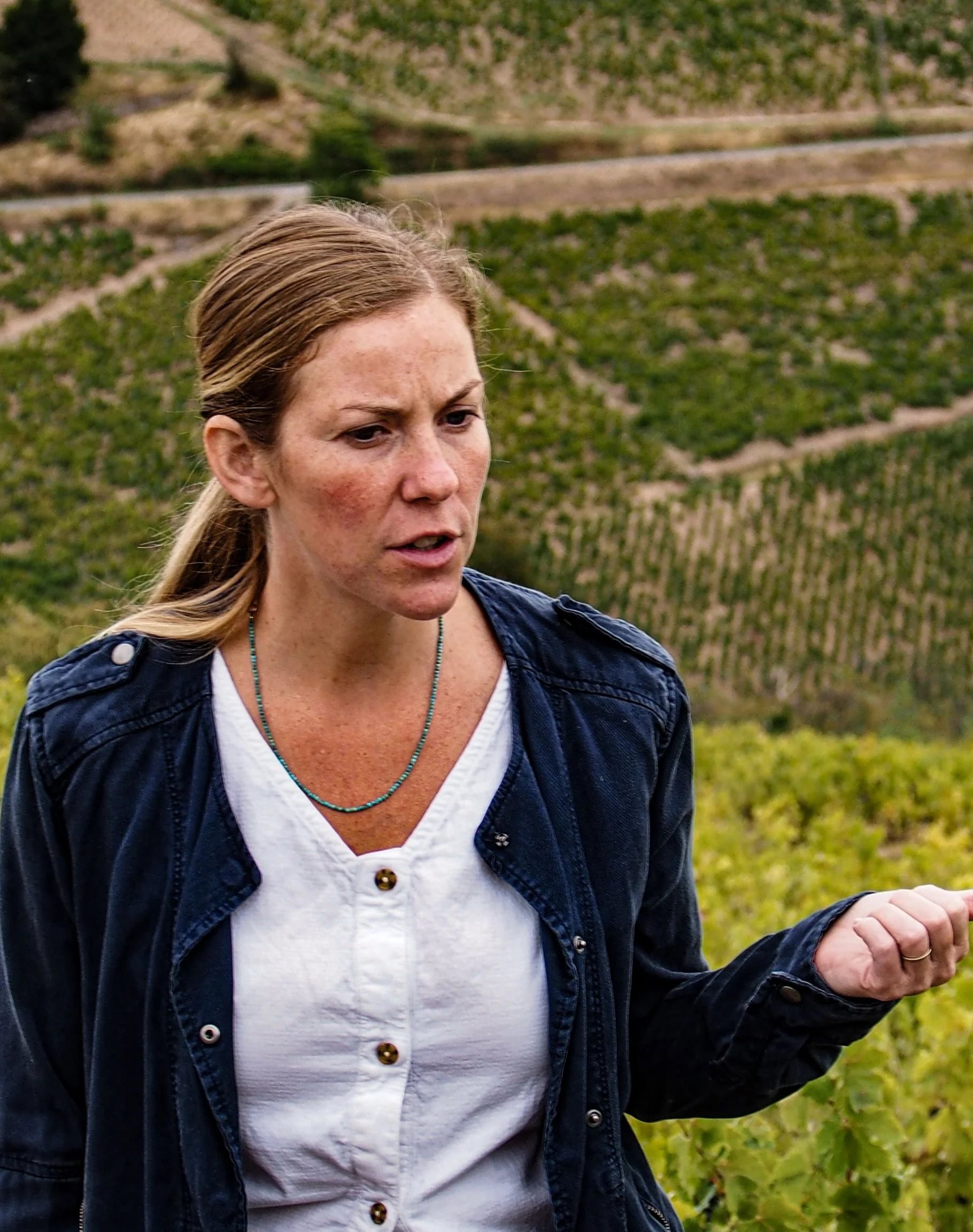Domaine Chapel
Beaujolais might be one of the most picturesque wine regions of the world, but there are great struggles here that may not meet the eye at first. Michele Smith-Chapel explains,
“When we’re working in the vineyards, sometimes people in their 60s will stop by and say, ‘you know I did the same work when I was a kid!’ Sometimes I want to cry because its heartbreaking. They used to work the vines with their grandparents and a horse and plough, but then along came chemical farming. For them they’re heartbroken too, they had a big boom before people knew the consequences: there wasn’t knowledge and wealth was coming in. There was beauty and people were doing well; you can still see the old stone walls and terraces. They were a sign of wealth, but they've since crumbled.”
However, thanks to growers such as the young couple, Michele Smith-Chapel & David Chapel, the region is experiencing a rebirth, and the future is brighter than it’s ever been.
Meet Michele and David
This is the kind of love story which really should be turned into a novel.
Michele, one of New York’s most respected sommeliers, was visiting one of her favourite regions—Beaujolais—to taste with growers. David, the son of 3 Michelin-starred chef Alain Chapel, had also become smitten with Beaujolais and was working with the iconic natural wine domaine, Lapierre, where Michele was due to taste. However, she was running late, and Matthieu Lapierre had an appointment elsewhere, so David offered to step in.
The rest is history; long story short Michele never really returned to the US, and the two settled in an old stone house in the Juliénas Cru, rented vineyards, bought a dog, and began a family.
The Vineyards
It might sound like an idyllic life, but choosing Beaujolais as their destination isn’t all roses. Considered one of the Greats at the turn of the 20th century, unfortunately the region went on a rapid downward spiral in the 70s and 80s due to quick adoption of chemical agriculture, techno winemaking to mass-produce wine for supermarkets, and the négociant structure hammering down prices. Thankfully, there was a counter-movement of several growers who wanted to return to organic methods, and now the region has rediscovered its fame, with many of its natural winemakers gracing fine dining and wine bar lists around the world.
Arguably, it’s been the trendiest region of the past decade. But this also paints a somewhat unrealistic picture of the region, Michele explains,
“A lot of sommeliers and buyers are focused on the organic growers, so this keeps the wine world in a bit of a bubble in terms of what they’re drinking and have access to. So when you go to restaurants and wine merchants, where you see so many organic Beaujolais producers, it makes the movement perhaps seem far larger than it really is.”
But although perhaps a little slow, it is definitely moving in the right direction:
“Even since we moved here in 2017, a huge amount of the vines around us are being converted. A couple of years ago I looked out of my window to see a guy using a pioche [a hand tool] and I was like, who uses a pioche around here!? Before, all that land had been treated chemically.”
It turns out it was a guy who’d converted to organics, and now he loans some of his vineyards to another young grower. Since, there’s been another neighbour with 20 hectares who has converted to organics, and a Dutch family have bought another neighbouring piece of land with one hectare of vines, which they’ve converted to organics and co-planted with trees. So it might be a small movement, but it’s one that is establishing itself and growing day by day.
From the beginning, David and Michele knew they would work organically. Michele says,
“You want to make a more sustainable environment as you live in that environment,” she points to her vegetable patch which borders a vineyard. “When you’re in it, you believe in it: it becomes real and urgent. It affects our land, and we drink and eat what comes from the land.”
Their vineyards are located in the Chiroubles and Fleurie Crus and in Beaujolais-Villages. They are older vines planted densely in the gobelet style (little bush vines), meaning all work has to be done by hand, with the pioche or with a cable plough (like a horse and plough pulled by a human).
“In Fleurie, we have two hectares, but the work is probably equivalent to that of eight as it’s so intensive. As it’s surrounded by forest, growth comes from every direction. It’s a really wild, untamed area, and that’s what it wants to be!”
Large grasses that can take away too much of the water, especially in a hot year, baby acacia trees and wild bramble bushes have to all be removed by hand. It’s a real labour of love, but it’s worth it. Being in a region that has a strong organic community has been hugely helpful:
“We’ve been fortunate to have received so much advice from other growers. You don’t move here to become rich — it has to be out of love for the region. But at the same time, although working organically is time and labour intensive, you can show other growers in the area that there’s a benefit: it’s better for the land, of course, but financially it also provides more opportunity.”
In addition to their own parcels, they buy fruit from young growers who are organic or already in the process of converting. This means they can experiment with other Crus, such as Moulin-à-Vent, as well as with white wine - they source Aligoté from the limestone soils of Mâcon. It also helps to incentivise other growers, who can see the organic guys being paid more for their fruit, and so it creates a snowball effect.
“If you really believe in what you’re saying, then you also need to put your money where your mouth is. By sharing resources and knowledge, people become more open-minded and willing to try. Working organically is more than just a romantic notion; it’s very real and you see the results every single day.”
They are grateful to the many winemaker friends who have helped them, and although they’re still relative newcomers (their first vintage was in 2016) they are already passing the baton and supporting other growers. Their Aligoté, for example, comes from a young guy who has taken over his parents’ vineyards and converted them to organics. It’s a win-win; they’re able to make a white wine; and the young grower receives financial support, easing cash flow.
Fleurie Les Charbonnières
Chiroubles
The Wines
Inspired by the likes of Lapierre and Guy Breton, their Gamays are fermented according to the carbonic maceration technique. Each cuvée is treated in the same way; maceration is very gentle (only wetting the cap when necessary) and fermentation always takes place naturally in fibreglass tanks, in which the wine is also aged. This means that the nuanced characters found in the wines are truly down to the differences in the vineyards. For example, although their Chiroubles and Fleurie vineyards are both planted on similar soils (sandy decomposed pink granite), the tastes found in the bottles are completely different. Michele says,
"Our Fleurie is perhaps the most expressive of our parcels. The grapes always have this specific character which is almost like what you find in Pineau d’Aunis; this specific peppery, herbaceous, wild character that’s very representative of the vineyard itself; it embodies it in a way. You can smell it at harvest, when the wine is fermenting, and it returns later in bottle."
But where does it come from? She muses,
“I think it has something to do with the yeast population. Sure, there are other factors like differences in alcohol, but from perception it’s the same difference that’s always present, which makes me think it’s definitely some sort of yeast. Perhaps that yeast only exists there, who knows?”
With a few years under their belt, they are not only getting to know their parcels better, but also beginning to feel more confident. Michele and David look at one another as they finish each others’ sentences:
“We’re really proud of the wines. We began in 2016 [with advice from Lapierre], then 2017 we were on our own. Our 2018 vintage was really important as it was our first year getting to where we wanted to be as farmers; but we were still very much learning. In 2019, with a bit of luck too, the wines are really expressive. We’re very young, and still taking advice; always trying to do better; learning how to create the best expression that would really represent a place.”
They’re amongst the most expressive and elegant wines of the Beaujolais. Having already achieved such incredible results after just five vintages, I’m certain their future will be as bright as the region’s is proving to be.
[Originally published in February 2021]


